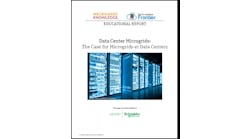By Elisa Wood
July 29, 2010
Not so long ago, consumers seemed to like energy efficiency just a little bit more than going to the dentist. Clearly that has changed, as evidenced by the recent run on appliance and home retrofit subsidies in several states.
Greens are no longer alone in swooning over front loader washing machines and geothermal heat pumps. But who exactly are these new energy efficiency buyers and what do they want? Two recent surveys shed some light.
E Source partnered with Nielsen Claritas in surveying 32,471 U.S. consumers to find out how ready they are to pursue efficiency. The survey revealed that larger households are more inclined toward energy efficiency than those with one or two people. In addition, demand response seems to be somewhat addictive. Try it once and you want to do it again. And, no surprise, appliance rebate programs are very popular.
Energy efficiency consumers can be broken into four categories, says E Source, which trademarked each of the names.
- EE Achievers, who represent about 12% of those surveyed, are the prime market. They’ll jump into one or more programs at a time: rebates, weatherization, audits, load management, efficient light purchases.
- EE Anticipators account for about 26% of the US population. They’re inclined to pursue efficiency but have yet to do so in any big way. They may enter the market in the next 12 months.
- EE Uncommitteds represent about a quarter of consumers. This group is interested but not ready to commit. E Source thinks they may respond to low-cost and no-cost approaches to energy savings.
- EE Indifferents, fortunately for the EE industry, represent only about 37%. Even if efficiency saves them money, they’re not motivated.
More details are available at E Source: http://www.esource.com/public/default.asp.
Meanwhile, the Electric Power Research Institute and Southern California Edison surveyed southern California residents to uncover their expectations when it comes to electric cars. It turns out that potential electric car owners are much like Internet users. They like speed. Survey participants do not want to wait around for their cars to be charged, and they’re willing to pay a premium to speed up the process.
“Public fast-charging availability (for example, a 10-15 minute charge facility) may have a strong influence on PHEV adoption, as two in five hybrid owners and one in three non-hybrid owners say the capability will ‘definitely’ influence their buying decision. About 75% said they would pay a 33% premium (over the slower, at-home rate) to fast charge. That percentage drops to 30% if the relative cost of fast charging is double that of slow charging,” says EPRI.
The EPRI report is available for free download here: http://my.epri.com/portal/server.pt?Abstract_id=000000000001021285
Visit www.realenergywriters.com to pick up a free Energy Efficiency Markets podcast and newsletter.





